Sniper Elite 5 PC Performance Analysis
Rebellion has just released the latest installment in the Sniper Elite series, Sniper Elite 5. Powered by the Asura engine, now is the time to compare it and see how it performs on the PC platform.
For this PC performance analysis, we used an Intel i9 9900K processor with 16GB of 3800MHz DDR4, AMD’s Radeon RX580, RX Vega 64, RX 6900XT, NVIDIA’s GTX980Ti, RTX 2080Ti, and RTX 3080. We also used Windows 10 64-bit, the GeForce 512.95, and Radeon Software Adrenalin 2020 Edition 22.5.2 drivers.
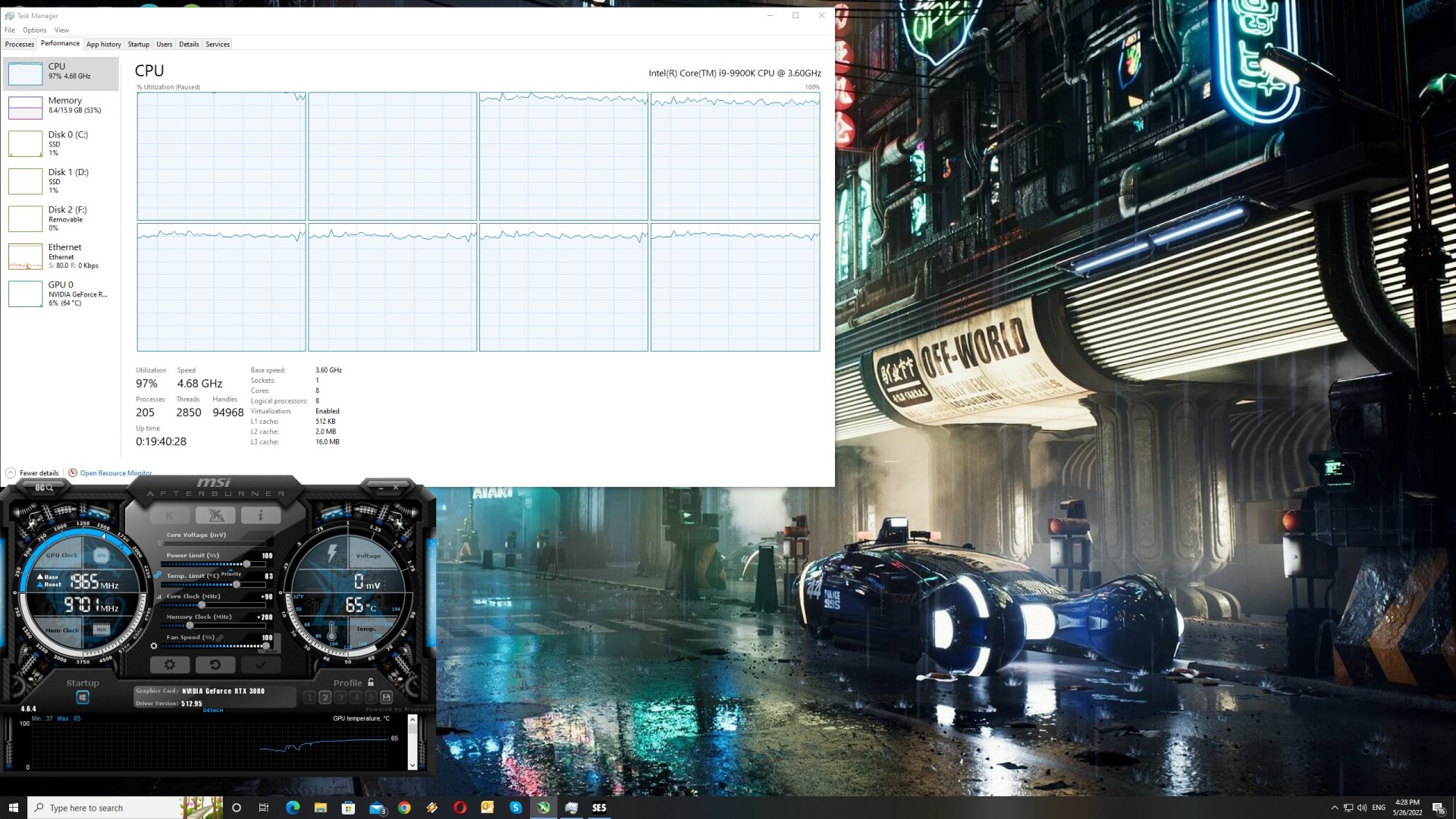
Rebellion added a respectable number of graphical settings to tweak. PC gamers can adjust the quality of textures, shadows, reflections, anti-aliasing, draw distance, and water. There are also options for motion blur, ambient occlusion, tessellation, and obscuring fields. The game also supports DX12 and Vulkan.
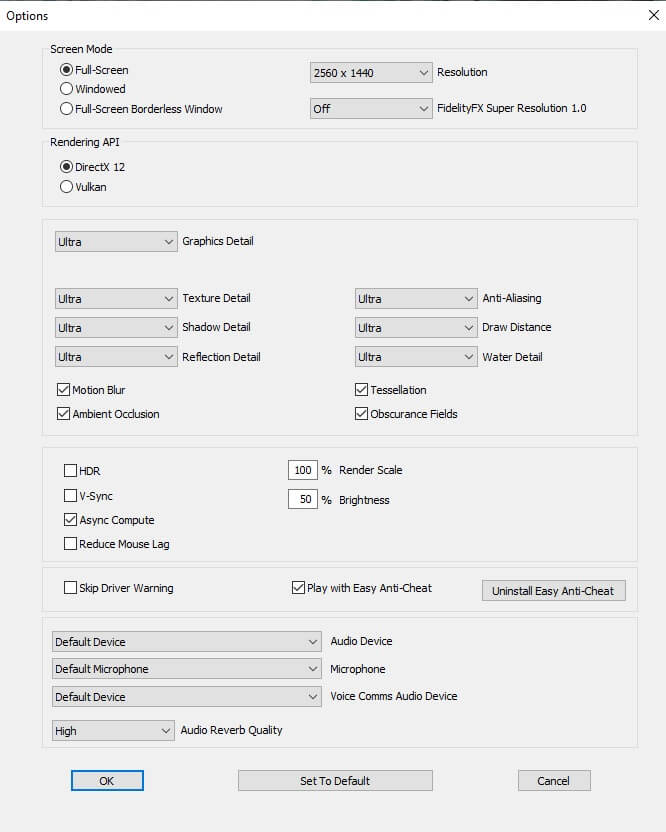
Sniper Elite 5 does not have any built-in benchmark tool. As such, we compared the starting area of the game from the first main mission.
In order to know how the game scales across multiple CPU threads, we simulated a dual-core, quad-core, and hexa-core CPU. For our CPU benchmarks, we lowered our resolution to 1024×768 (so we could eliminate any possible GPU bottlenecks). Unfortunately, our dual-core system was unable to deliver a smooth gaming experience. Even when we turned on Hyper-Threading (and hit frame rates above 60fps), we encountered plenty of stuttering issues. This basically means that you will need at least a modern quad-core system. Luckily, though, with a quad-core you can enjoy frame rates over 120 fps.
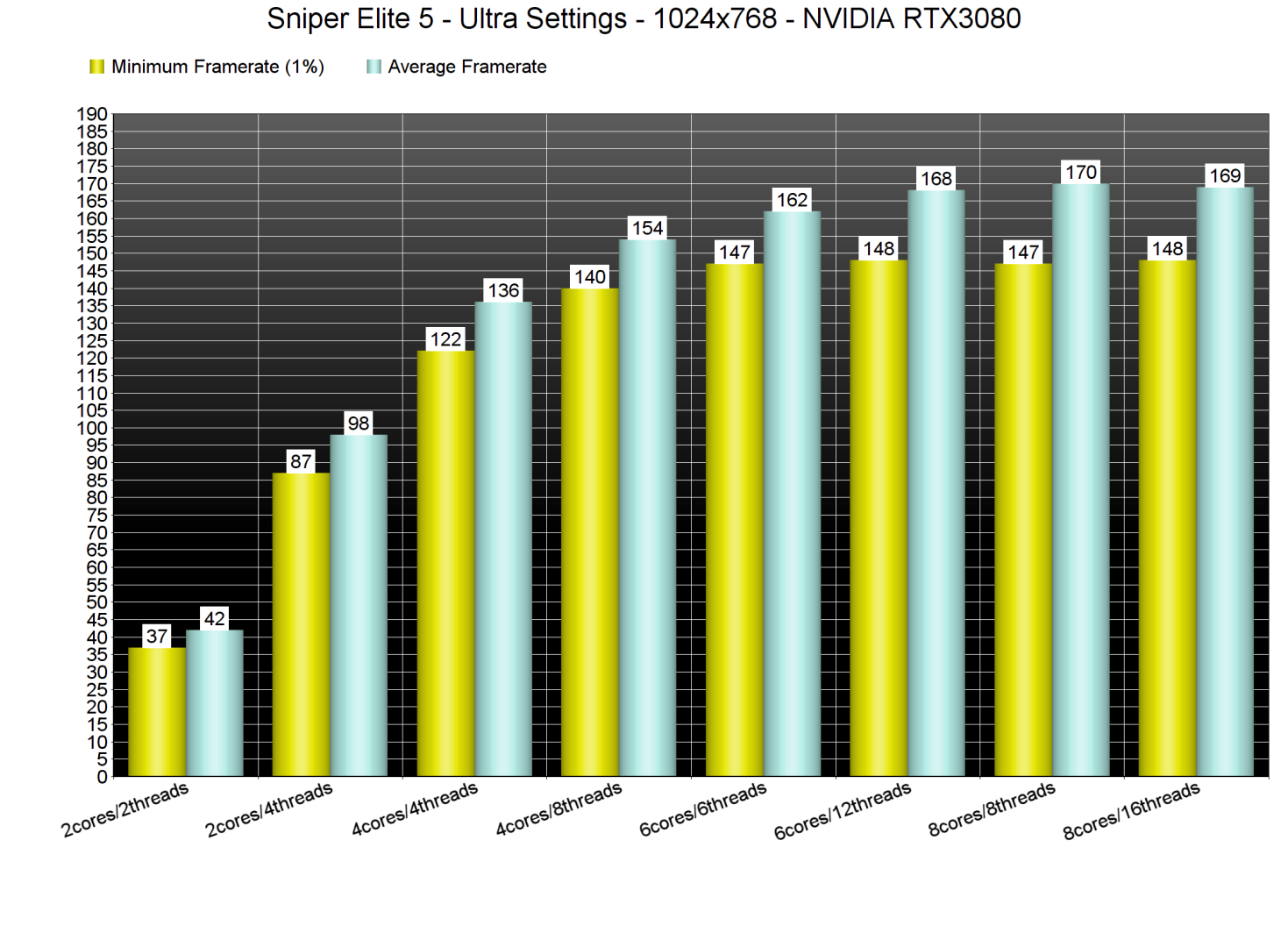
Sniper Elite 5 is primarily a GPU-bound title, emphasizing all GPUs even at 1080p. The only GPUs that could run the game smoothly were the RTX2080Ti, RTX3080, and RX 6900XT. The Vega 64 could also hit 60fps with AMD FSR 1.0 enabled. However, we are against it, because FSR 1.0 makes the game blurry.
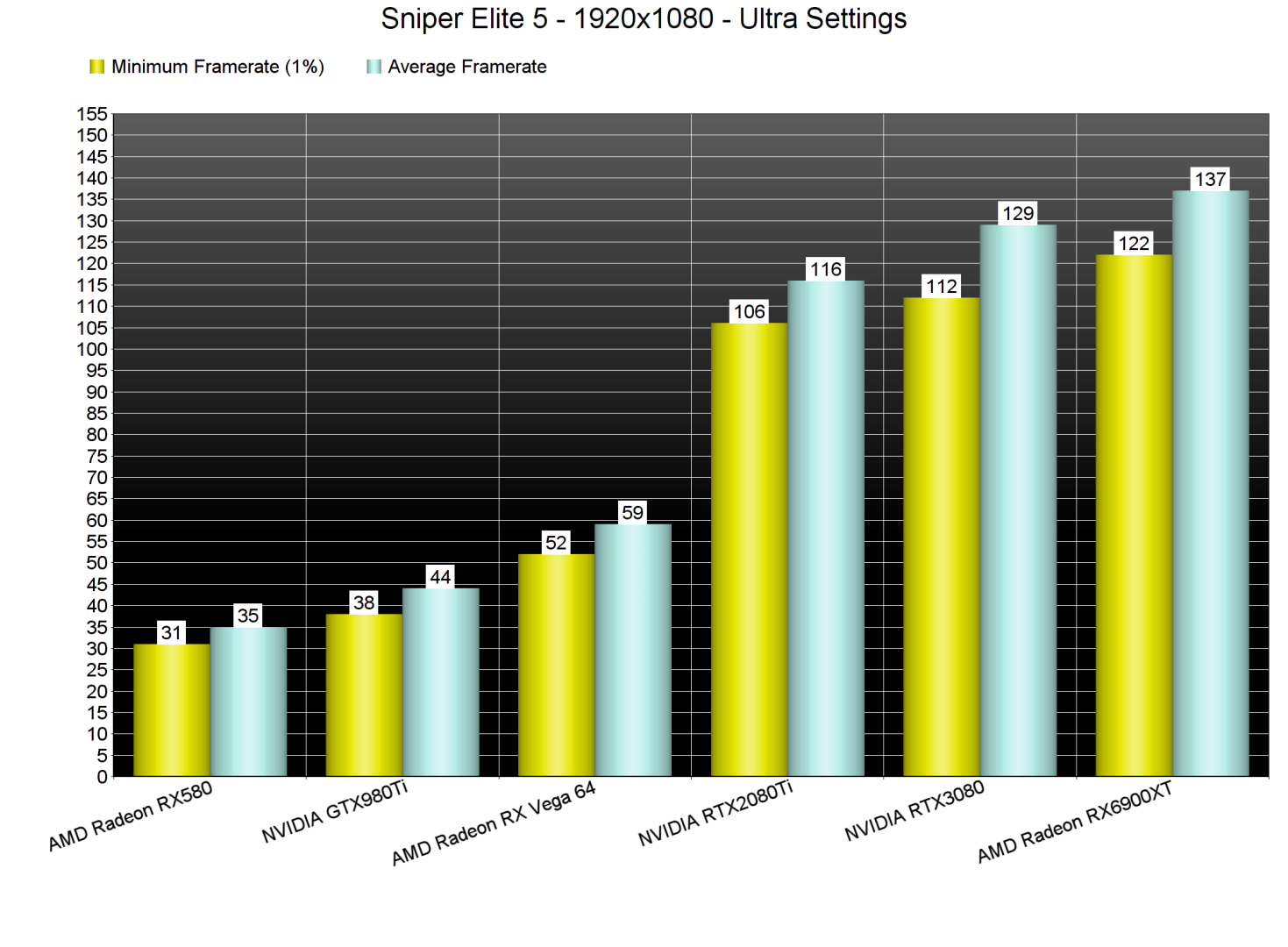
Below are comparison screenshots between Native 4K (left) and AMD FSR 1.0 Ultra Quality (right). As you can clearly see, AMD FSR screenshots look worse because they are blurrier and have more aliasing. Hopefully Rebellion will add support for AMD FSR 2.0 in the future.










At 1440p/Ultra, our top three GPUs were able to deliver a smooth gaming experience. And when it comes to 4K, the only GPU capable of delivering a consistent 60fps experience was the AMD RX 6900XT.
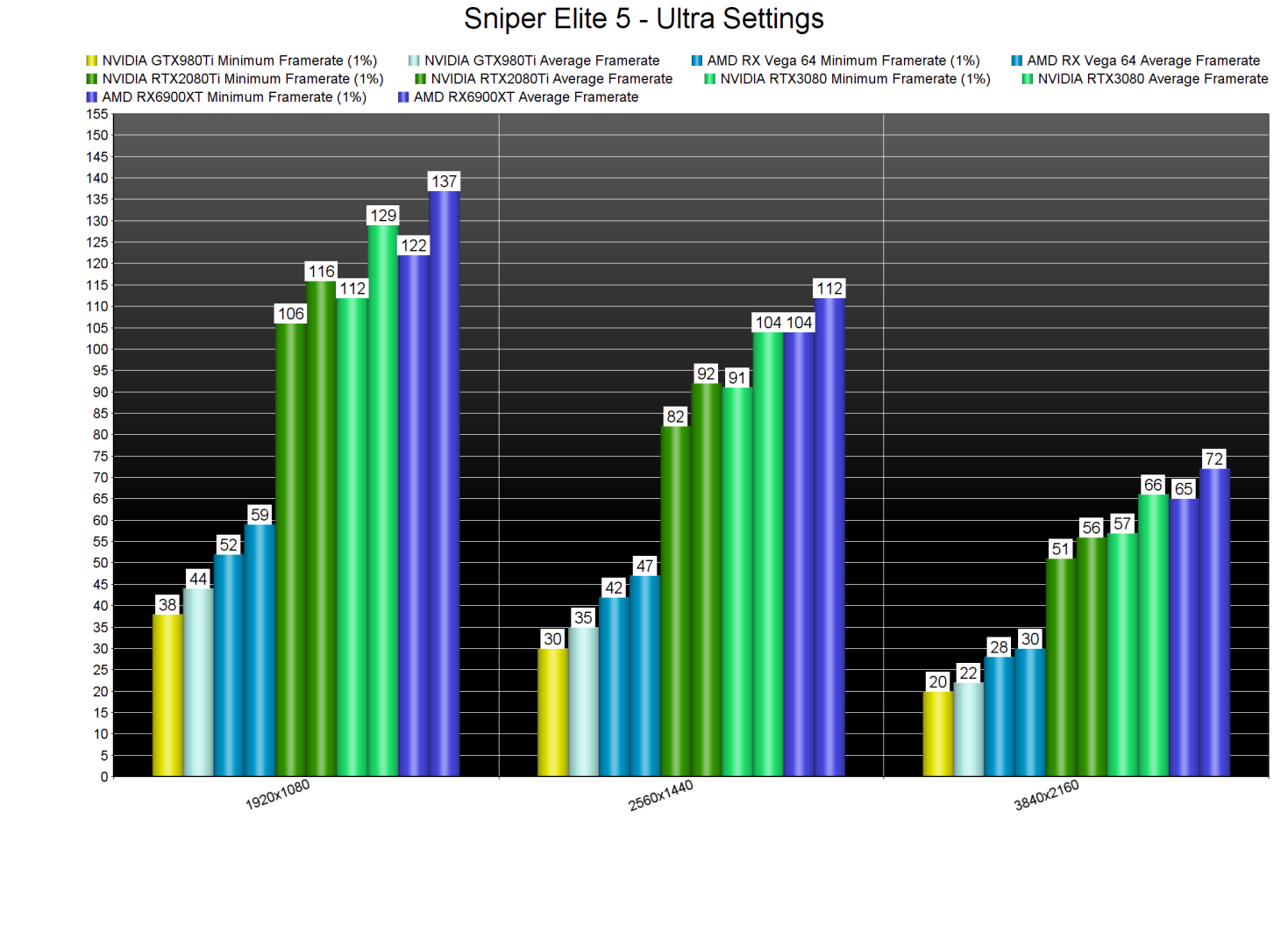
Sniper Elite 5 is also upgradable for older/weaker GPUs through its graphics settings. While our RTX3080 was unable to deliver a 60fps experience at 4K, it was able to do so at high settings. In fact, and by simply lowering the draw distance and reflections to high, we were able to maintain 60fps at 4K.
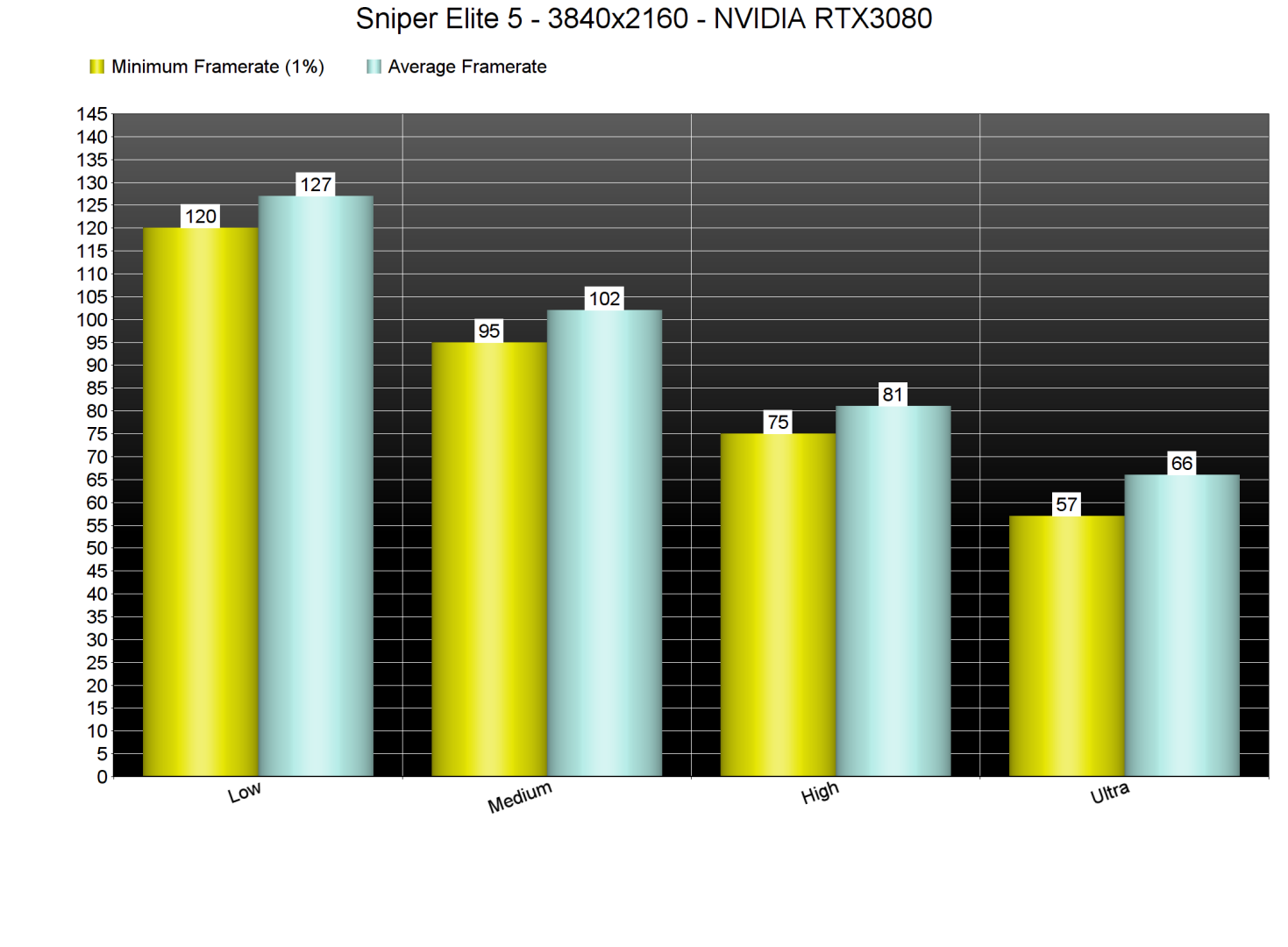
Graphically, Sniper Elite 5 looks like what you’d expect from a cross-gen game. The game has detailed character models, although they can’t come close to those we’ve seen in games like Final Fantasy 7 Remake or God of War. The environments look great and the game has collapsible grass. While Sniper Elite 5 doesn’t push the graphical limits of PC games, it’s still fun to watch. Not only that, but the game does not suffer from any stuttering issues.
Overall, Sniper Elite 5 looks and runs great on PC. The game doesn’t require a high-end processor, displays proper K&M prompts on screen, and doesn’t suffer from any stuttering issues. Additionally, it can be downgraded to older/less powerful GPUs through its graphics settings. DX12 also seems to work the same as Vulkan on our AMD and NVIDIA hardware. Rebellion have done a solid job here, although we hope they add support for AMD FSR 2.0 in the future!

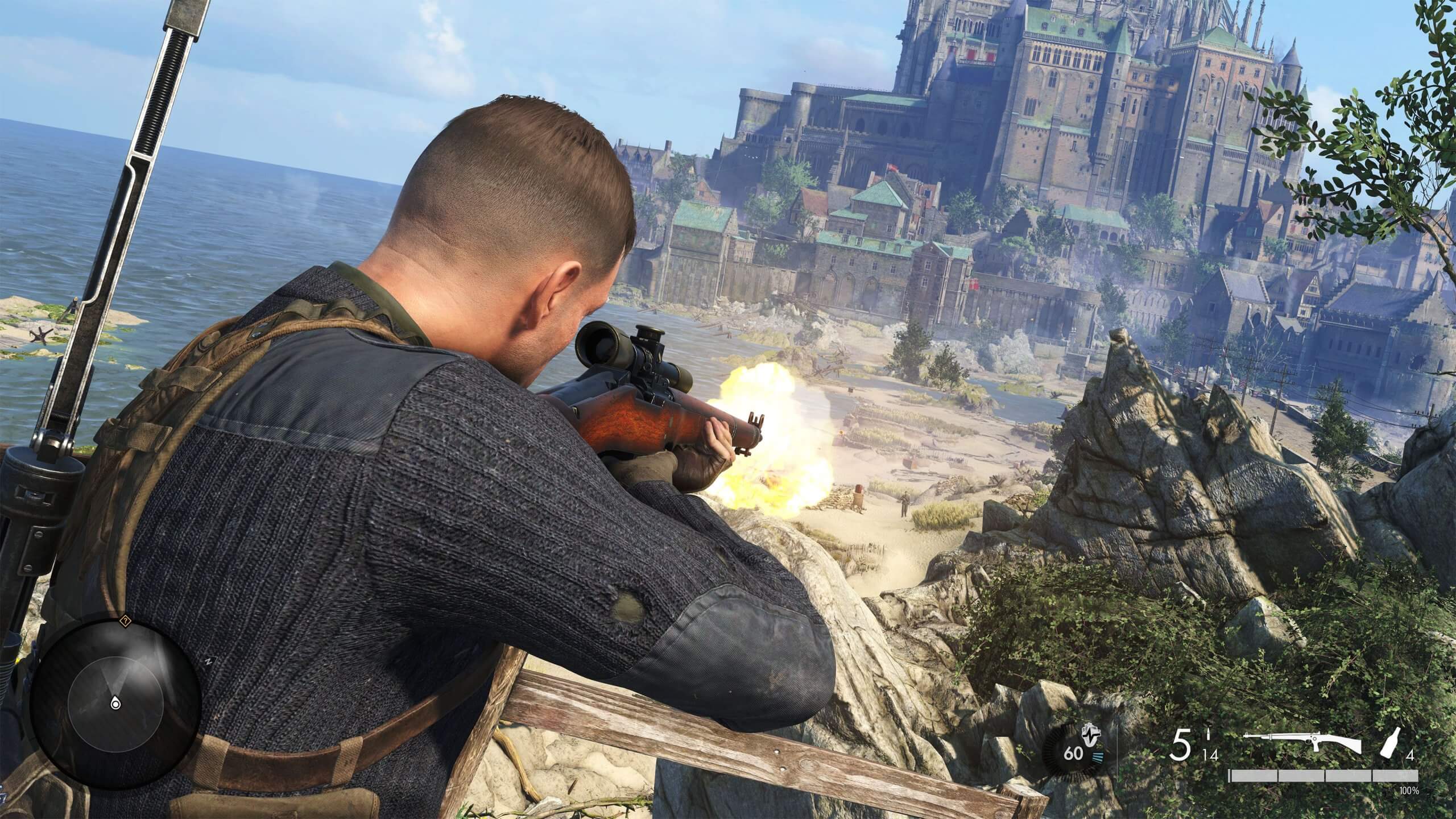
Comments are closed.